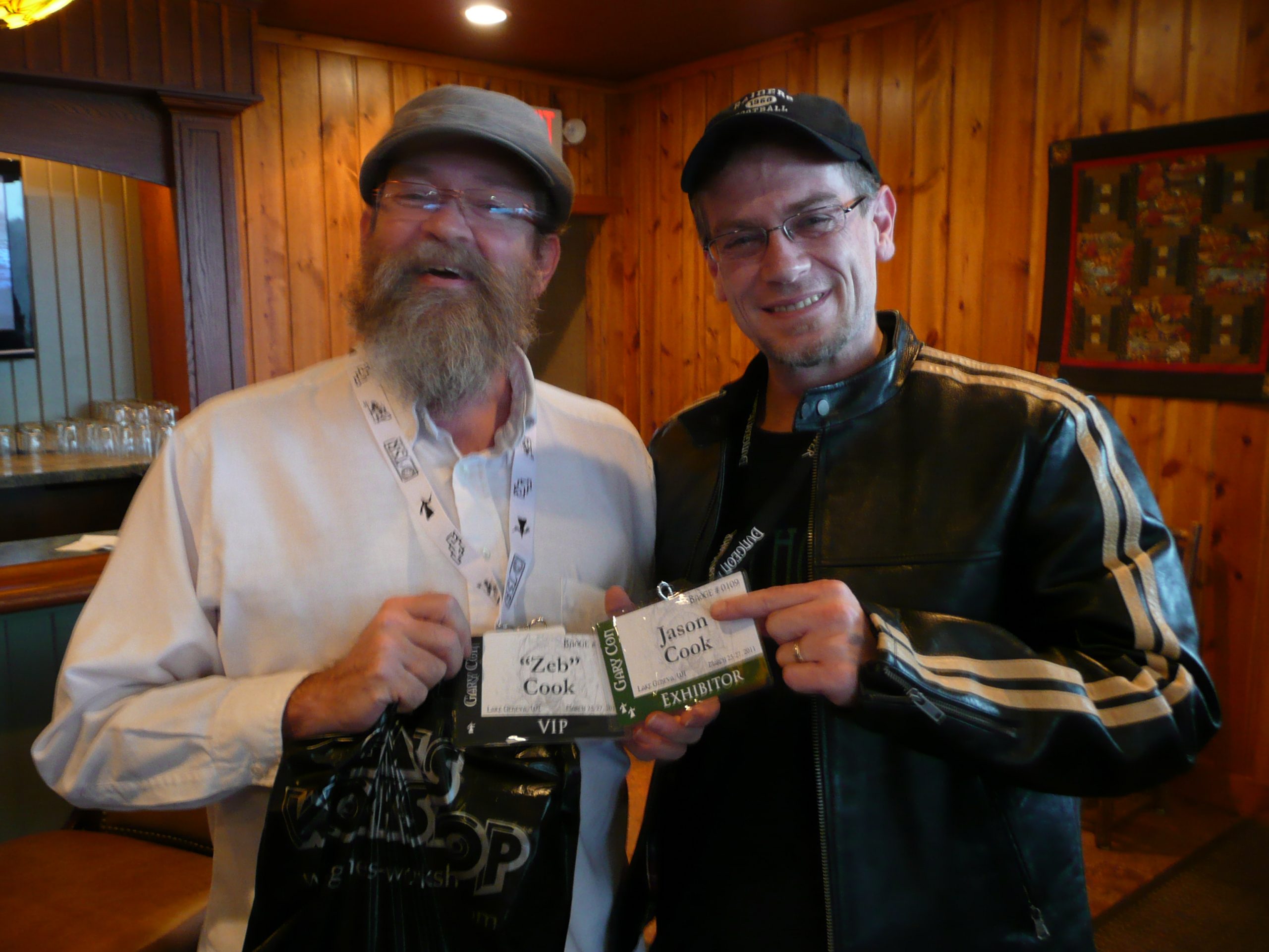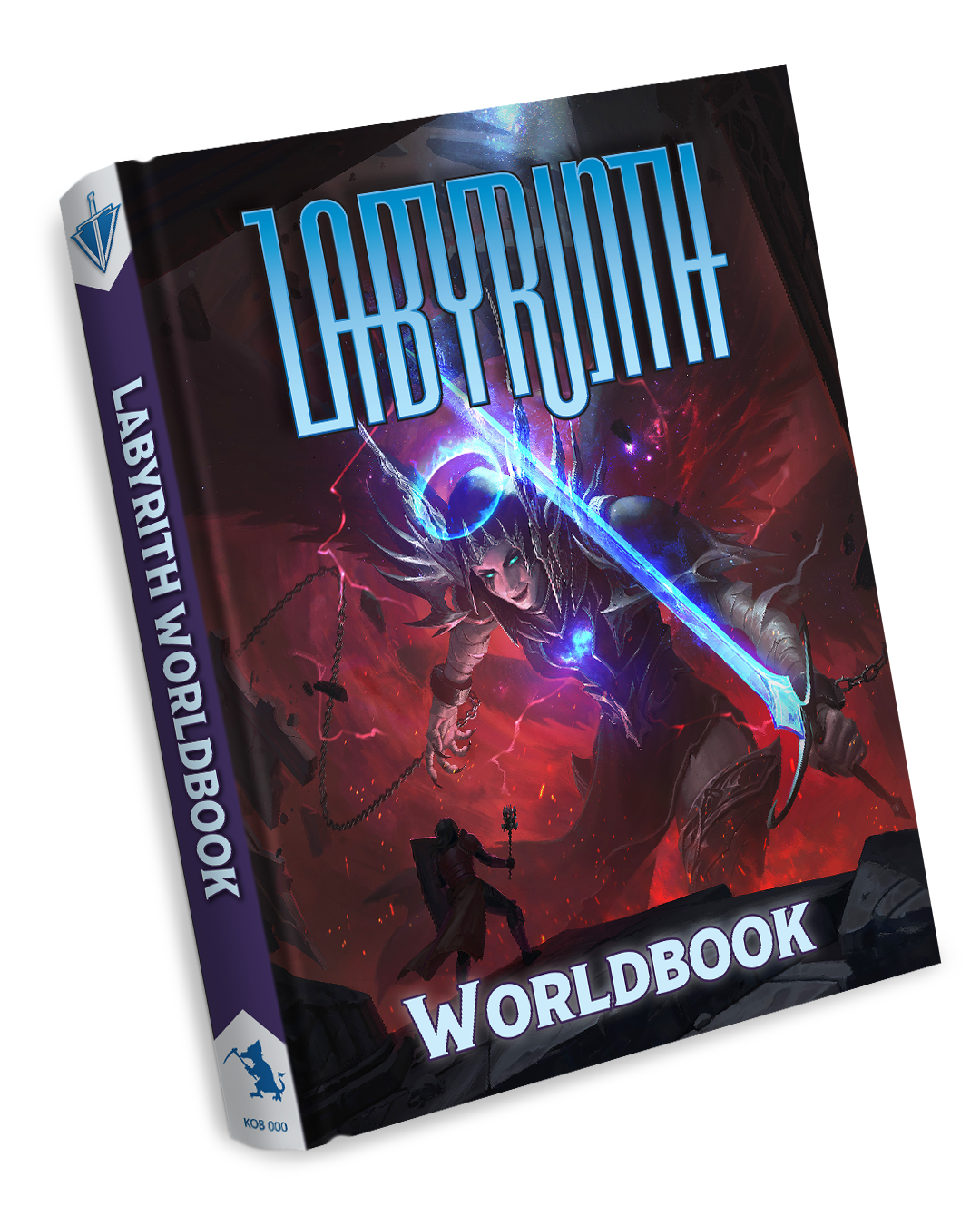
Photo: bander.bramblegrub from Beacon Falls, CT
This article is a transcript of a seminar on world building put on during the Kickstarter campaign for Labyrinth Worldbook. (Out now!)
Hosted by Kobold Press Social Media Manager Zach Newbill, the panel featured Kobold Press CEO, Wolfgang Baur, designer Richard Green, and gaming luminary David “Zeb” Cook, who was instrumental to many AD&D releases in the ’80s and ’90s, and invented the Planescape setting.
The transcript has been edited for clarity and concision.
Zach Newbill: I’m Zach, Community and Social Media Manager for Kobold Press. I’m hosting today’s seminar.
Wolfgang Baur: My name’s Wolfgang Baur. I’m the publisher and founder at Kobold Press. But, more importantly, I’ve done a lot of world building through the years, and I’m the design lead on the Labyrinth project.
Zeb Cook: I’m Zeb Cook. I’ve been doing a lot of world building for a very long time including Planescape. [ed note: See Zeb Cook’s Wikipedia entry for a more thorough rundown of his place in PRGs!]
Richard Green: And I’m Richard Green. I’ve been world building for Kobold Press since the beginning. I’ve worked on the Midgard Worldbook, Empire of the Ghouls, Southlands Worldbook, and now the Labyrinth. I’ve also published my own city setting source book, Parsantium, City at a Crossroads.
Zach: First off we have the history and perspective models of world building. Wolfgang, do you want to take us off?
Wolfgang: Sure. Every time we bring up world building, we say there’s different ways to do it. I think the most important thing to know about world building is, who are you doing it for?
I think the most important thing to know about world building is, who are you doing it for?
We’re talking about published and professional world building today, but there’s a model of world building and a history of world building that predates the RPG hobby. If you look at something like the Silmarillion for Lord of the Rings, it’s volume after volume of world building text to support Middle Earth, and to talk about its deep history and its characters. It goes incredibly deep, and none of it is in the final novels except by distant reference. That model of world building consists of doing it to entertain yourself or to write a novel or to entertain your game group. You’re not doing it to publish a game book.
Beyond that, there are models that go back in the RPG industry. Zeb, you’ll remember Greyhawk, Dragonlance, any of those.
Zeb: Well, when we started doing things [at TSR], we were doing modules. And essentially, everything we did was world building, because there was no world! For every module, you had to create a quick setting so you could explain it. You talk about how authors and novelists create incredible backstories. We did the exact opposite. We made no more than what we could put on a page.
Then we got letters from people saying, “You obviously have a whole bunch more.” No, we don’t have anything more on that.
Eventually we realized that we had Greyhawk. That was the sole “world” that existed. But it was also kind of a roadblock, because Gary controlled Greyhawk, and wouldn’t let other people play in the sandbox without very careful supervision.
So we decided that we needed to create some other things. Dragonlance got created. A lot of effort was invested up front into world building, with a novelist approach, because that was one of the things those creators were. They wanted to tell a big, epic story. Everything in that world went to serve that story. And then Forgotten Realms came out, and that was the exact opposite. That was, “We don’t even have a place for all this stuff.”
Wolfgang:But we have an encyclopedia! The Forgotten Realms is the kitchen sink approach to world building. Everything is there. Here’s a boxed set. Here’s another region. Here’s a city book. How much appetite is there to explain? It’s the opposite of do the bare minimum. I don’t know if that’s still in fashion.

Zeb: Well, we had a walking encyclopedia in Ed Greenwood, for starters. He created a lot of trivia about his version of the Forgotten Realms, because the version of Forgotten Realms that came out is a different kind of a thing from his. But you know, if you say, hey, they found a caravan. I’ve got charts full of cheese to see what’s on it.
Wolfgang: Not everyone wants the cheese, but it’s appealing. It’s when you have volume after volume of charts full of cheese, that defeats the purpose, to support your game. Unless the purpose is to entertain you, the way reading the Silmarillion may entertain you.
Richard: It can also make you feel constricted when you want to run a game, and you’re thinking, I can’t introduce a new type of cheese. It’s not on the chart! I never worried too much about that. I would tear things up and mark my own things on the maps. But I know some people feel a desire to stick to the cannon, and that makes things difficult when it’s all been defined and nailed down.
Wolfgang: I think there’s a new model of world building that Kobold Press and others have pursued, which is to provide the minimum viable world building. The one-book model, like, here’s the Southlands book, or you know, the Ravenloft book. It’s one book, and you don’t get any more. That’s the canon. Everything else comes from actual gameplay. Whatever you make up.
Zeb: Part of that is also supported by the Internet. You come out with a book and then you get fan sites and people who decide, “I’m gonna build a whole lot more stuff to this.”
Wolfgang: The wiki!
Zeb: Love wikis.
Wolfgang: And they’re not just for tabletop RPGs. Wikis do a ton for computer RPGs that have deep worlds.
Zeb: I worked on Elder Scrolls Online for 9 years, or something like that. Anybody who has poked around with Elder Scrolls knows that there’s this gigantic amount of lore. And we literally would go to fan wikis to look stuff up. Because I didn’t know how all of that worked.
Wolfgang: It can be a bit suffocating or overwhelming, or just too deep. Our solution to this is about choosing a single theme or inspiration. At least initially, you have to explain your world building to someone, even if that someone is yourself. And it needs to have a tone or a mood or a central conflict. Something about it is what that world is about. All those deep dives come later.
Richard, do you want to talk about themes and inspiration? Maybe for Parsantium, maybe for something else?
Richard: Yeah. So for Parsantium, I wanted a crossroads city setting, and I had it in my head that I wanted a kind of Byzantium, and I wanted ancient India, and I wanted the Arabian Nights. I wanted a melting pot of all these cultures.
So I built on that and the rest of the world all around. It was only sketched out in the beginning in enough detail for me to explain how it had impacted that one city. Because I knew that the whole campaign was going to start in the city, and most of it was going to take place there, or in the dungeons underneath it. So I didn’t need to worry about the rest of the world.
When Erling came to publish it a few years later, it became a book that people could take and put into any world of their own as long as they kind of had some space to place it.
Wolfgang: It’s got a tight theme. And it’s a model of world building that I think works really well in a focused way. Zobeck did the same thing. We were publishing adventures the way Zeb described, and people kept asking us, “What’s nearby? How do these two adventures relate to each other?”
It became defensive world building. Okay, we’ll say there’s a forest near the city, and there’s some mountains near the city, and that’ll cover 90% of what we need. Those city book approaches are easy to drop in, but there’s something to be said for the higher concept ones.
Zeb: I’m a big fan of higher, crazed, concept stuff. A lot of times I start from, “What kind of mood or theme do I want to get across?” I’m very fond of going to Shakespearean themes.
A lot of times I start from, “What kind of mood or theme do I want to get across?”
I’ve done it over in the video game side for world building things. Like, this is gonna be a MacBeth kind of a story. And then, you start seeing how that starts to shape out. How do people react to various things? And then you figure out like, what else can I have happening here?
So you start playing with variations. You’ve got the MacBeth murder and treachery thing, now where can we put in humor? Where can we change the expectation of what’s going on? And so that sort of stuff.
Another thing I’m really big on, and, Richard mentioned this, is going for historical analogs. Frankly, trying to create a whole new culture that has no historical analog is almost impossible. And it’s really hard for players because they don’t know anything without it being related to something they already understand.
So you think, what’s a cool analog? I like the idea of a Byzantine-themed place that gives you a sense of what’s important, what you know, what things going to look like. So when you go to describe them, you’ve got something gives your players and artists something that they can start from.
The seminar continues next week!
Check out the Labyrinth Worldbook in the meantime!

Read more at this site
